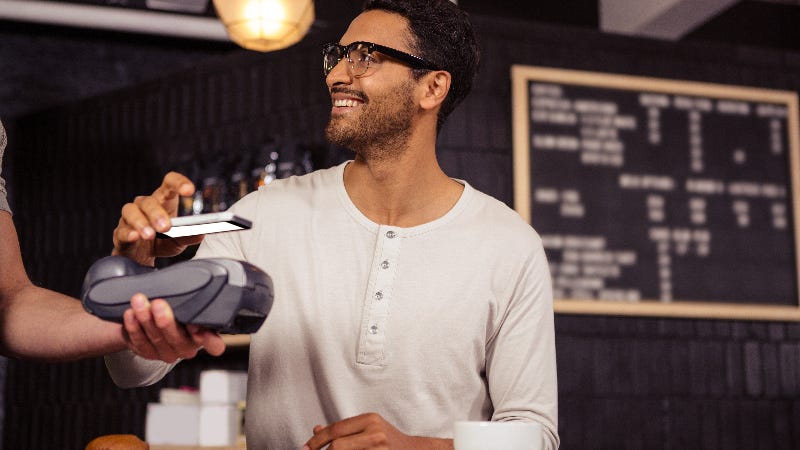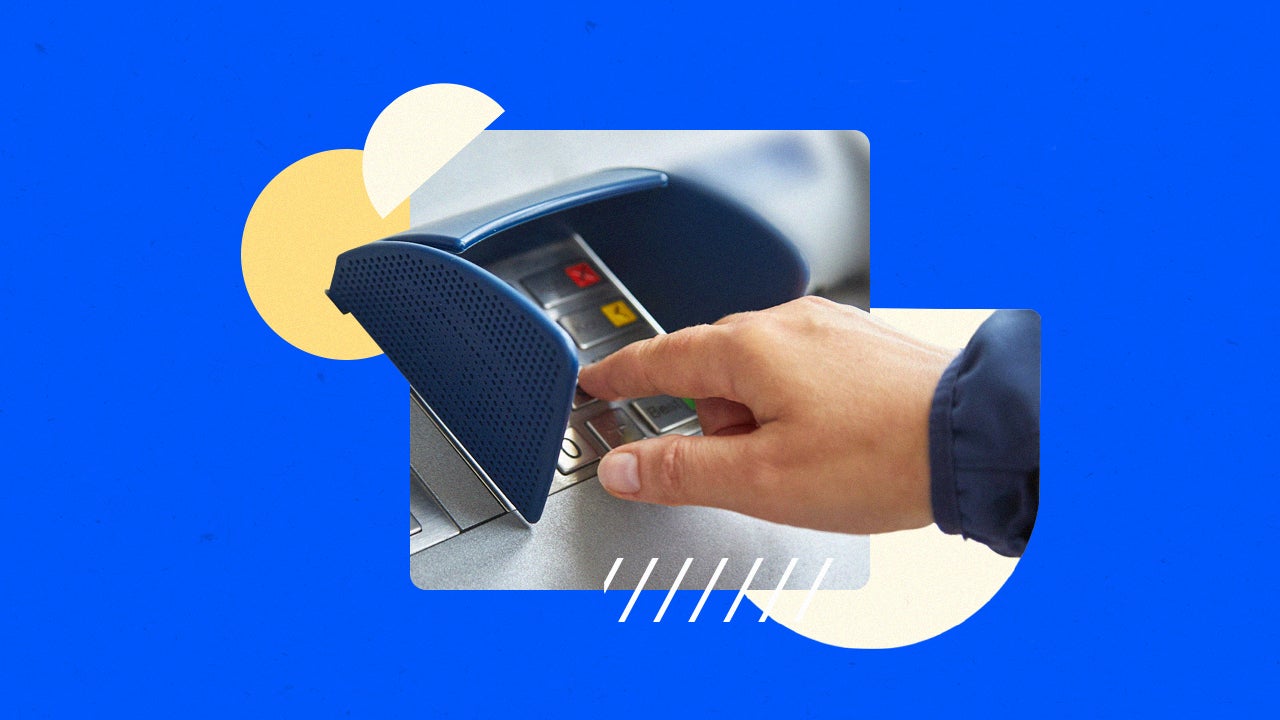Cybercrime is on the rise. These are the safest ways to pay




Key takeaways
- Credit cards are the most secure payment method when shopping online, offering features like encryption and fraud monitoring, as well as zero fraud liability and limited liability for fraudulent charges.
- ACH payments, while also encrypted and secure, can still leave you legally liable for losses and are the leading source of fraud losses in the U.S.
- Digital wallets, such as Apple Pay and Venmo, offer secure payment options by encrypting card information and requiring biometric authentication for each transaction.
Criminals are always looking for new ways to corrupt in-person and online payments and snatch whatever funds they can get their hands on. In the first half of 2024 alone, the Federal Trade Commission logged over 50,000 reports of consumer credit card fraud which resulted in $129.7 million in losses — and that’s just credit cards. Other payment methods like bank transfers and payments and payment apps and services fraud also experienced wide-ranging fraud and loss within the first six months of 2024.
But that doesn’t mean you can’t make it harder for the bad guys to steal from you. The good news is, there are plenty of in-person and online payment methods that have the technology and features to keep your personal information safe. To protect your identity and your money, use the safest payment methods to pay securely online and at the register.
Secure online payment methods
If you’re hoping to make your transactions as secure as possible when you shop online in 2024 and beyond, consider the following online payment methods.
Credit cards
Credit cards are by far the most secure payment method to use when shopping online. Credit cards use security features such as encryption and fraud monitoring to protect you from fraud and keep you safe. Some card issuers and networks have even begun using AI to aid their fraud detection efforts. Mastercard’s generative AI, for example, was 300 percent faster at detecting merchants that were compromised by or at risk of fraud, according to a 2024 report by Deloitte. Card issuers like Capital One and Wells Fargo are using AI to alert customers to potential fraud or errors in payments.
Even if a fraudster manages to skirt past these preventative measures, most issuers also offer zero fraud liability. That ensures you won’t be on the hook for a cent of fraudulent transactions charged to your credit card.
Beyond the zero fraud liability coverage credit cards offer, you can only be legally liable for up to $50 in fraudulent charges on a credit card due to the Fair Credit Billing Act (FCBA). This means that even if a hacker or thief gets ahold of your credit card number, you won’t be on the hook for more than $50 in purchases they make, regardless of how much they spend.
ACH payments
Automated Clearing House (ACH) payments let you transfer funds directly from your checking account to another bank account. This payment network adheres to plenty of security features that keep your banking information safe, such as encryption and the implementation of access controls.
However, making an ACH payment still requires you to use good judgment to avoid losing money to scams. In 2023, this payment method was the leading source of fraud losses in the U.S. at $1.86 billion according to data from the FTC. Once you’ve authorized an ACH to go through, you may have difficulty getting your money back even if the bank determined it was indeed a scam. That’s because the fraud liability laws that typically apply to credit cards, don’t apply to deposit accounts.
Digital Wallets
Even though credit cards offer a slightly higher level of protection than your debit card, there’s still a chance that the card could be stolen or skimmed when you use it. Perhaps that’s why 48 percent of consumers are now using digital wallets, according to recent J.D. Power data.
Any cards you add to your digital wallets are encrypted and require authentication in the form of facial recognition, fingerprint or a passcode to complete a payment which may make it one of the most secure payment methods. Since your card number is hidden and you have to authorize every transaction with your biometrics, it’s more difficult for a thief to steal your card info. Furthermore, Apple Pay for instance, doesn’t store or have access to your payment information, and it doesn’t retain any transaction information that can be tied back to you later on.
The digital wallet most people are familiar with is ApplePay, but you could also use others like Venmo, Cash App Pay or Google Wallet.
Secure in-person payment methods
Technology has also made in-person payments more secure than ever, especially for payments using a mobile device. The following in-person payment methods boast increased security features that help protect your personal information.
Credit cards with EMV chip technology
Where you once had to swipe your credit card to make an in-person payment, most credit cards today feature EMV chip technology instead of a magnetic strip. With EMV technology, the payment terminal reads your card for the unique, encrypted information transmitted by the chip on your card. Since the single-use encrypted information is different for each transaction, this technology helps to eliminate counterfeit fraud.
EMV technology has expanded rapidly over the last decade, both in the U.S. and around the world. According to standards body EMVCo, more than 9 in 10 (94.8 percent) of card-present transactions worldwide were made using EMV-chip-enabled payment cards as of Q4 2023.
Credit cards with contactless payment
Contactless payments use the same technology as EMV chip and pin credit cards. With a credit card that allows contactless payments, you’ll hold your card above the payment terminal and the terminal will receive an encrypted, one-time use code for the transaction.
Before COVID-19 in 2020, contactless payments were already on the rise. However, this trend increased as a result of the pandemic and continues to grow in popularity.
Payment apps
Payment apps like PayPal and Meta Pay (formerly Facebook Pay) let you store multiple payment methods in one place for convenience and security. With a payment app, you can benefit from features like multi-factor authentication, notifications and even biometric markers.
Payment methods to avoid
While every type of payment method has some disadvantages, using cash is one of the riskiest forms of payment as there are no purchase protections if someone scams you out of your cash or otherwise steals it from you. It’s also difficult to track down if it’s lost or stolen.
There are at least some protections and convenience with debit cards, but the funds you use are still tied to your bank account which makes them riskier. Unlike credit cards that typically come with zero fraud liability and limit you to $50 in losses per the FCBA, debit cards only limit you to $50 in losses if you report the fraud to your account within two business days after you notice it.
- If you report fraud more than two business days but less than 60 calendar days after your statement is sent to you, you could be on the hook for up to $500 in fraudulent charges.
- If you don’t report card fraud for 60 or more days after your statement is sent to you, you could lose “all the money taken from your ATM/debit card account, and possibly more; for example, money in accounts linked to your debit account,” according to the Federal Trade Commission (FTC).
The bottom line
Fraud can happen to anyone, but that doesn’t mean you can’t take steps to avoid it and make yourself a less easy target.
Choose your method of payment carefully. Cash is your least secure option since it can easily be lost or stolen, but ACH payments resulted in the highest losses last year. Debit and credit cards — as well as digital wallets and payment apps — offer additional layers of protection and encryption, but credit cards are your most secure option thanks to their legally required fraud and zero liability protections.
Therefore, you may want to consider one of today’s top rewards cards to protect your purchases and even go a step further by adding it to one of your digital wallets.





